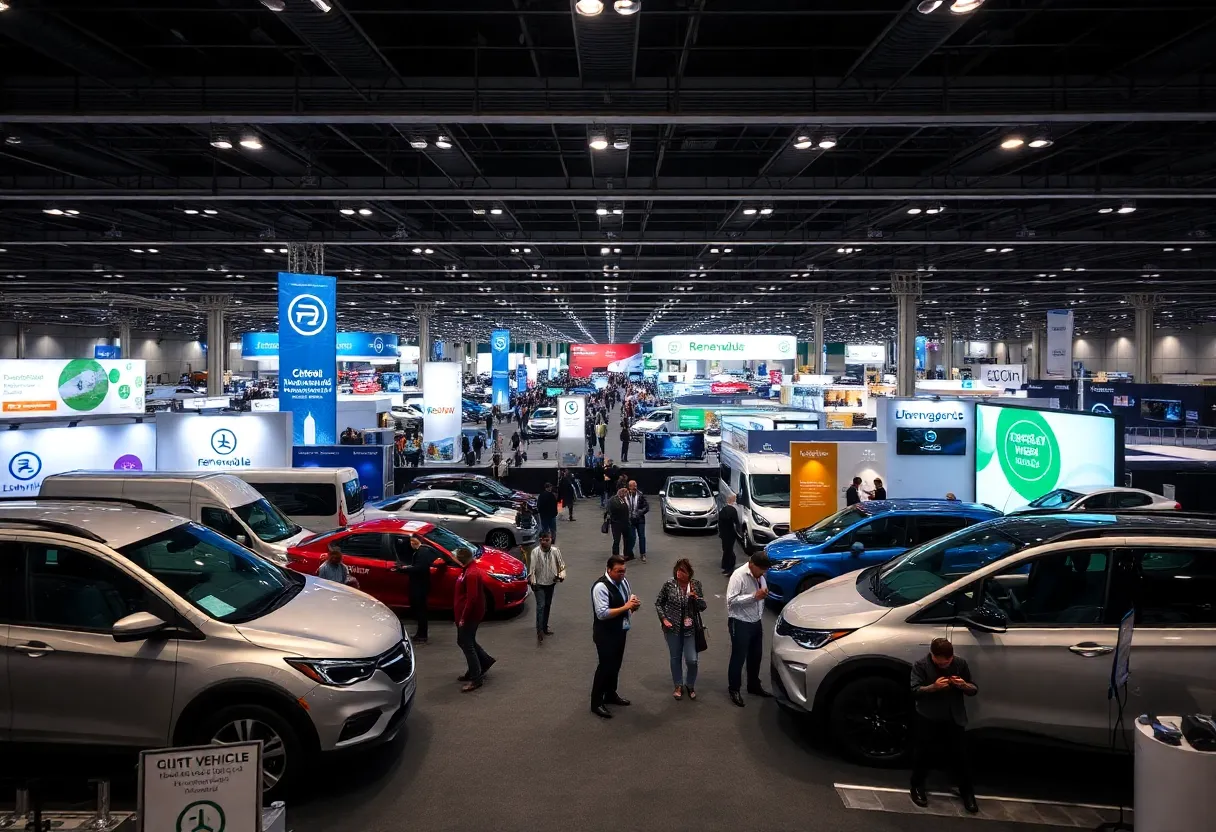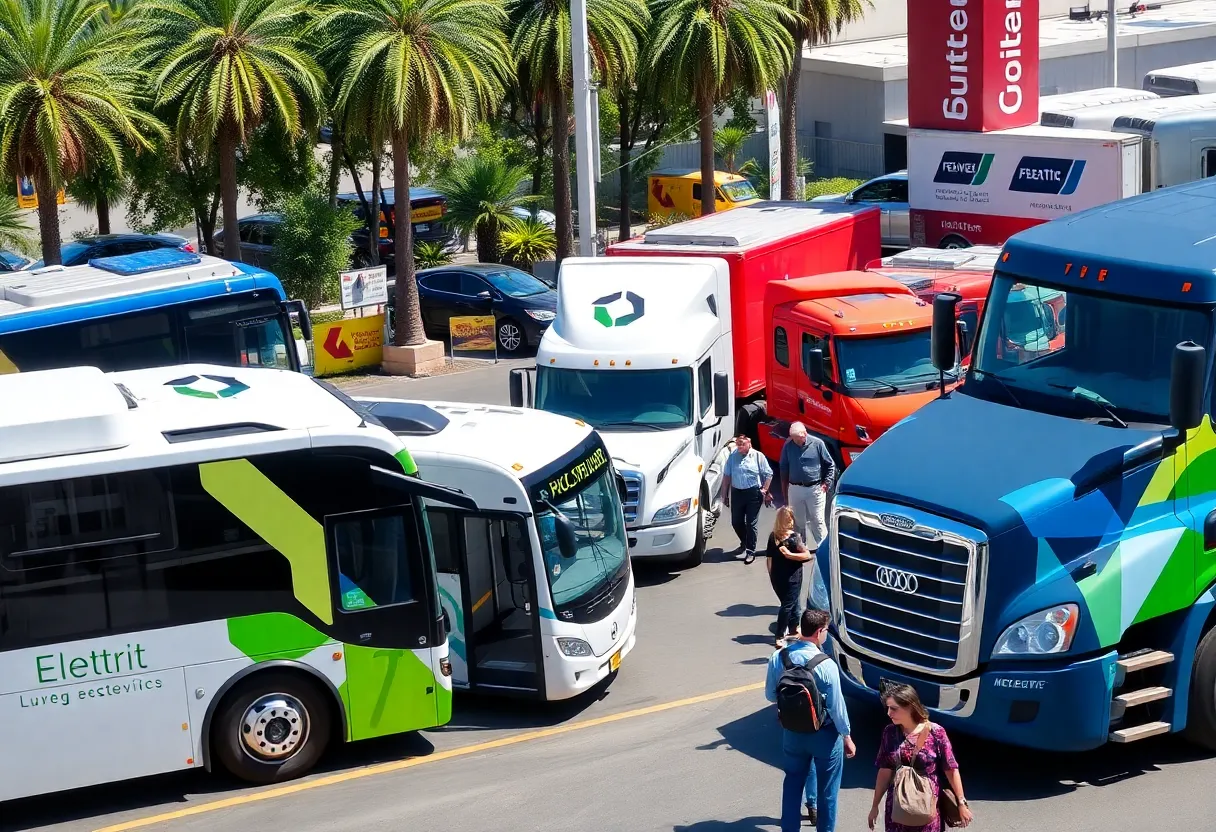News Summary
The ACT Expo in Anaheim showcases key changes in U.S. fleets, emphasizing a shift from electric vehicles to renewable diesel. The latest report reveals federal policies impacting clean vehicle technologies, alongside a rise in renewable diesel production, despite uncertainties in funding and regulations. The expo continues through Thursday, offering insights into the future of sustainable transportation as fleet operators adapt.
ACT Expo Showcases a New Direction for U.S. Fleets in Anaheim
The city of Anaheim, California, is buzzing with excitement as the Advanced Clean Transportation (ACT) Expo opened its doors, attracting attention from fleet operators and sustainability advocates alike. This year, the expo is not just a showcase for the latest advancements in clean vehicle technologies but also a reflection of significant shifts happening in the realm of U.S. fleets, highlighted by changing federal policies and an impressive growth in renewable diesel production.
Fresh Insights from the State of Sustainable Fleets Report
Revealed during the expo was the latest installment of the TRC Companies’ State of Sustainable Fleets report, now in its sixth year. This comprehensive report paints a picture of a landscape that is rapidly transforming, focusing on a surprising trend: a shift in federal policy is moving from prioritizing electric vehicles (EVs) towards a renewed emphasis on conventional fuels, particularly renewable diesel (RD).
After the Biden administration sparked a surge of funding for EV initiatives, reports indicate that the tide is shifting again, with intentions from the Trump administration to roll back many of these programs. This cycle of policy fluctuation is creating what the report describes as a “peak uncertainty” in emissions regulations, particularly concerning the EPA Phase 3 GHG emissions standards for heavy-duty vehicles and the guidelines governing power plants.
The Infrastructure Shift and Financial Uncertainties
Certain executive orders have temporarily paused financial distributions under significant legislative acts like the Infrastructure Investment and Jobs Act and the Inflation Reduction Act, which has understandably turned the spotlight on alternative fuel funding. However, amidst this uncertainty, over 600 state and local programs are still actively offering more than $13.5 billion for projects involving zero-emission and near-zero-emission vehicles, demonstrating that funds for cleaner technologies are still flowing.
Renewable Diesel on the Rise
A trend that stands out amidst the shifting policies is the jump in renewable diesel production, which rose by an impressive 28% in the first half of 2024. By the end of the year, projections expect production to reach a whopping 7.257 million gallons per day, surpassing a goal of 5 billion gallons. This robust growth is setting the stage for a feasible alternative to traditional diesel fuels.
Natural Gas Adoption and School Bus Registrations
On the natural gas front, the launch of the new Cummins X15N engine has fueled a rise in Class 8 tractor registrations. However, it wasn’t all good news—there’s been a significant 54% drop in registrations for natural gas school buses, attributed largely to Blue Bird ceasing the production of its natural gas models. Still, the renewable natural gas market is thriving, expanding with over 400 facilities across the U.S., showcasing a dramatic 234% increase over the last six years.
Challenges Ahead with Tax Credits and EV Growth
While ownership costs for natural gas vehicles have historically been lowered thanks to incentives like the Alternative Fuel Tax Credit, this too now faces uncertainties with changing tax structures. Furthermore, with the expiration of this credit at the end of 2024, the emergence of the new 45Z tax credit from the Inflation Reduction Act adds to the mix, although specifics are still very much pending.
Despite a lack of federal backing, registrations for battery electric vehicles rose by 47%, totaling 1,436 units. Though future funding for initiatives like the EPA Clean School Bus Program remains uncertain, funding for the 2023 rebate program is currently in progress, suggesting a mixed bag of prospects ahead.
Looking Ahead with Optimism
One promising initiative appears in the form of the vehicle-to-grid (V2G) technology being adopted by school buses, with districts like Oakland Unified School District already converting their entire fleet to electric models that utilize bi-directional charging. Moving forward, keen eyes will be on a forthcoming supplemental report focusing on propane vehicles, promising more insights into the diverse landscape of sustainable transportation.
The ACT Expo runs through Thursday at the Anaheim Convention Center, continuing to serve as an essential platform for innovation and education in sustainable fleet technologies. As the landscape of U.S. fleets continues to evolve, one thing remains clear: the push towards a cleaner, more sustainable future is alive and well.
Deeper Dive: News & Info About This Topic
HERE Resources
Additional Resources
- ACT News: State of Sustainable Fleets 2025
- Wikipedia: Sustainable Transport
- Business Wire: Vontier’s Smart Sustainable Fleet Solutions
- Google Search: Sustainable Fleet Solutions
- Fleet Equipment Magazine: ACT Expo
- Google Scholar: Sustainable Fleets
- ACT News: ACT Expo 2025 First Speakers
- Encyclopedia Britannica: Clean Transportation
- ACT News: ACT Expo Teams Up with NAFA
- Google News: ACT Expo







